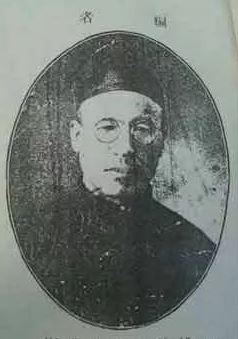Mr. Yao Minglan, styled Fuchun, from Zunhua City, Hebei Province, was a renowned martial artist during the Republic of China era, dedicating his life to martial arts and advocating for the national skill. In 1929, Mr. Yao, together with his fellow disciple Mr. Jiang Rongqiao, co-authored “Lectures on Tai Chi Chuan,” which was published in Nanjing and Shanghai in 1930. The book, easily understandable and an excellent teaching material for Tai Chi Chuan, received endorsements and prefaces from Zhang Zhijiang, Li Jinglin, Yu Youren, Zhang Zhankui, and Huang Bainian. Unfortunately, their planned publication of Wang Zongyue’s direct lineage of Tai Chi Long Fist (108 forms) did not come to fruition. Nevertheless, Tai Chi Long Fist continues to be passed down in Zunhua, characterized by stretching and bone pulling, encompassing ten major forms including dragon, snake, crane, tiger, horse, chicken, eagle, bear, phoenix, and monkey, with a 20-character secret to its application, offering excellent training effects.
Mr. Yao devoted his life to martial arts, excelling in Tai Chi, Xingyi, Bagua, and Shaolin Lianhuan Mian Zhang. His Tai Chi Chuan integrated the strengths of various schools, practical and exquisite. Shen Shou once commented, “It resembles Yang style but is distinct, forming its own system, known as Yao style Tai Chi, with a uniqueness unseen in other schools.”
Yao’s Tai Chi Chuan eschewed unnecessary complexity for conciseness and focus on natural internal power, aiming directly at the essence and holistic health, with rigorous training that emphasized practicality over formality, highlighting four prohibitions and eight essentials. The four prohibitions include avoiding forceful breathing, protruding chest or slouching back, shrugging shoulders or retracting the neck, and stagnation in movements. The eight essentials cover sinking shoulders and dropping elbows, connecting the crown to the pelvis, touching the teeth to the palate, containing the chest and relaxing the waist, embracing naturalness, integrating internal and external, balancing yin and yang, and seeking stillness in motion. Key techniques include piercing, smashing, shaking, trembling, and the snake coiling hand, with techniques like “Dragon Claw Exploration” for varied footwork, demanding flexibility and depth, slow without stiffness, quick without chaos, lively without dispersion, graceful and ethereal.
Based on my teaching and practicing experience, I’ve slightly adjusted traditional teaching methods to balance fitness and skill development, briefly outlining the practice method, steps, and overall requirements for Yao’s Tai Chi Chuan:
- Training Method and Steps:
- Wuji Meditation for Enlightenment: Focus on relaxing the body and mind, achieving tranquility through Wuji and Hunyuan stances. High relaxation aims for self-forgetfulness, deep, even breathing, transitioning from chest to abdominal breathing, and finally to reverse abdominal breathing, building internal strength from stillness to movement.
- Key Insights: Grasp Tai Chi’s internal requirements for scientific and correct movements, balancing contradictions within movements for harmony. Mastery of these principles leads to natural, integrated movements, where force is unified and effortlessly applied.
- Stance Training: Basic training to solidify posture and shoulder alignment, combining breathing exercises to understand internal movement sensations. This builds a foundation for Tai Chi’s spiral energy, essential for responsive and adaptable defense and offense.
- Stance Transformation: With a solid stance foundation, practice transitioning and weight shifting to enhance lower body joint mobility, particularly the ankles, knees, and hips, laying the groundwork for fluid movement and weight transfer in push hands and free sparring.
- Strength Training: Develop Tai Chi’s internal strength, focusing on clear and dark energy, soft and hard force, with spiral energy permeating all movements. This multi-dimensional force is adaptable, defensive, and offensive.
- Single Movement Practice: Isolate movements for individual practice, deepening understanding of each movement’s purpose and application, and establishing a solid foundation for complex routines.
- Push Hands Insights: After basic training, engage in push hands under guidance to explore Tai Chi’s depth, focusing on softness, adherence, and sensitivity to force, essential for understanding and applying Tai Chi’s principles in combat.
- Overall Requirements and Effectiveness Evaluation:
- General Requirements: Understand principles before practicing movements, prioritize mental and physical integration, maintain balance between softness and firmness, and practice with mindfulness to achieve natural proficiency.
- Evaluation of Effects: Successful practice leads to overall relaxation, energized spirit, smooth qi flow, and sufficient internal strength. Proficiency is marked by natural breathing, coordinated movements, sensitive response to opponents’ actions, and the ability to apply Tai Chi principles flexibly and effectively in defense and offense, achieving a state of effortless mastery and deep understanding of Tai Chi Chuan.


